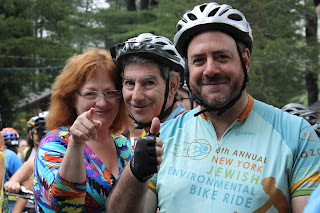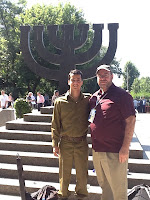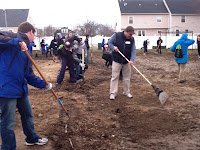(cross-posted; originally appeared at eJewishPhilanthropy)
With one week to go until the historic Centennial of United Synagogue, I would like to thank the Pew Charitable Trust for publishing its provocative study – “Portrait of Jewish Americans” – which provides a demographic snapshot of American Jews and their affiliations as well as a sober prognosis for Jewish life in America.
I write these words in all sincerity. The findings of the study are a catalyst for the very conversations we expect to host at our Centennial, which we have dubbed, after all, The Conversation of the Century.
After the publication of the new poll, it seems that an even better subtitle might be: A Conversation for the Coming Century.
Headlines in the press trumpet some of the more potentially alarming findings of the Pew study. “Jewish Secularism on the Rise,” says the Los Angeles Times. “1 in 5 American Jews Have ‘No Religion,’” states The Jerusalem Post. Or more sedately, “Poll Shows Major Shift in Identity of American Jews,” according to The New York Times.
Instantly, pundits and observers of Jewish life are weighing in. While some, such as Dr. Jack Wertheimer of the Jewish Theological Seminary, term the findings “grim” in the Times article, there are no surprises for us – grim or otherwise – for the work of United Synagogue has been to develop strategies and approaches to the current landscape that is being detailed.
Perhaps more than many Jewish organizations, United Synagogue has served as the foot soldiers in the field, speaking to synagogue leadership and laity, learning what is broken… and what works … in the house built by Solomon Schechter, which still occupies the epicenter of contemporary Jewish life.
We have kept our ear to the ground, hearing the rumbling underfoot. The time for change is here. We have known that for a while. And the Pew poll proves that.
Further, the fact that more than 900 people have registered to participate in United Synagogue’s collaborative, crowd-sourced Conversation of the Century is testimony of the willingness of those who care about the center of Judaism, Conservative and otherwise, to convene under a big tent and agitate for change on both a grassroots and institutional level.
We have high aspirations for our Centennial, describing it as the big RESET button for United Synagogue, and by extension, Conservative Judaism. This is the moment when we rise up to reverse the last years of decline, rewrite our story, and become inspired by the spirit of renewal. This is the pivot point for Conservative Judaism as well as North American Judaism.
Portrait of Jewish Americans validates our hunch that the time has come for broad and sweeping changes … both micro and macro. And Conservative Judaism, which is the vital center of American Jewish life … no matter what the numbers in this study say … is in the perfect position to bring about that change.
We at United Synagogue believe that meaningful relationships, framed by a Judaism rooted in tradition and informed by the day, will keep Jewish life in America vibrant and relevant. We further believe that leadership must be both enlightened and intuitive and have been on the cutting-edge of leadership training and development. We believe in the centrality of Jewish learning and literacy and have created a new paradigm for learning that will be rolled out over the next several months.
As we head into our Centennial, we are examining the findings of the Pew study to learn how this research might refine our vision of today and tomorrow.
For the past century, Conservative Judaism has shaped and defined the Jewish world. As we settle into the 21st Century, we must learn what to take with us and what to leave behind as the realities of a new era dawn on us. This moment is key; it is our great, transformative Reset button.
Wherever we are headed, we carry with us the centrality of the importance of our kehillot – our sacred communities – which continue to be the iconic institution of transmitting Jewish identity, These kehillot are the heart and soul of Conservative Jewish life. We believe in the transformative power of holiness that takes place therein. We believe in fostering relationships of meaning. And we embrace the formidable task of strengthening these synagogues and the hundreds of thousands of people served by them.
We don’t yet know what will come out of the conversations that have yet to take place at our Centennial but we do know that they will be infused with the passion of a people who are forever yearning for renewal and transcendence.
And we know that talk is not cheap. Meaningful conversation lead to thoughtful planning and actions. From the Conversation of the Century, we expect the “take aways” to be transformative; providing a much need antidote to the alarm evoked by the Pew study.
Let the conversation begin.








